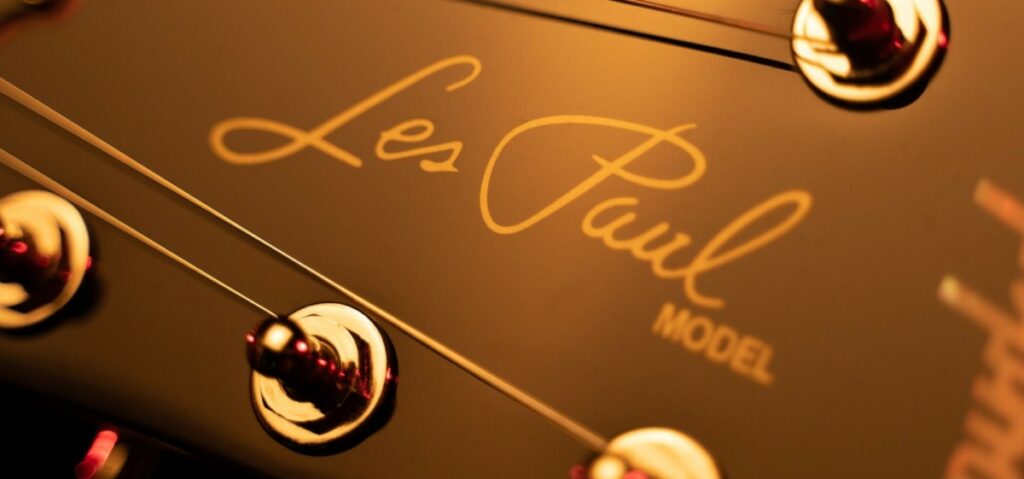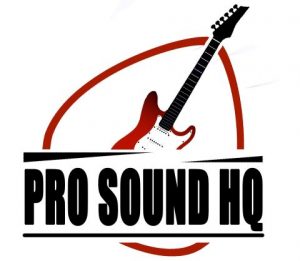There are three flagship models in the Epiphone Les Paul line-up:
- ’50s Standard
- ’60s Standard
- 1959 Standard
In this article I’ll address all the differences and point out all the similarities between these three guitars so you can figure out which is right for you.
The Epiphone Les Paul ’50s Standard has a thicker neck and lower output pickups compared to the ’60s Standard model. They are also available in different colors and have different tuning machines. The Epiphone 1959 Les Paul Standard is the most expensive as it has Gibson pickups.
Here is a table highlighting all the differences between these three guitars.
| Feature | ‘50s | ‘60s | 1959 |
| Top Wood | Flame Maple AAA Carved | Flame Maple AA Carved | Flame Maple AAA Carved |
| Neck Profile | Rounded C | Slim Taper | 50s Vintage |
| Tuning Machines | Epiphone Vintage Deluxe | Grover Rotomatic | Epiphone Vintage Deluxe |
| Controls | Gold Top Hat | Gold and Nickel Top Hat | Gold Top Hat |
| Pickups | Epiphone ProBucker 1&2 | Epiphone ProBucker 2&3 | Gibson Burstbucker 2&3 |
| Colors | – Vintage Sunburst – Cherry Sunburst – Metallic Gold | – Bourbon Burst – Iced Tea – Ebony | – Aged Dark Burst – Aged Dark Cherry Burst |
| Left Hand Available | Yes | Yes | No |
| Price | $650 | $650 | $900 |

Pickups and Tone
The main difference between these three guitars is the pickups. The ’50s Standard and ’60s Standard use Epiphone ProBuckers whereas the 1959 Standard uses Gibson Burstbucker pickups. This is the main reason why the 1959 Standard is $250 more expensive than the ’60s Standard and ’50s Standard Epiphone Les Paul models.
Although the ’50s and ’60s Standard both use Epiphone ProBuckers, the ’50s Standard uses ProBuckers 1&2 whereas the ’60s Standard uses Probuckers 2&3. The 1&2 combo in the ’50s model have a lower output and warmer tone compared to the 2&3 in the ’60s Standard which are a bit hotter and more crisp.
Check out this YouTube video to hear a comparison between the two.
In terms of the differences between the Epiphone ProBuckers and Gibson Burstbuckers, the Burstbuckers are soldered and have orange-drop capacitors, unlike the ProBuckers. In terms of the tone, they’re both very similar but the Burstbuckers sound a touch brighter.
Check out this blind test comparison between these pickups so you can figure out which you prefer the tone of.
Neck Profiles
Here are the neck profiles for each model:
- ’50s Standard: Rounded C
- 1959 Standard: 50s Vintage
- ’60s Standard: Slim Taper
Although they all have different names, the ’50s Standard “rounded C” and 1959 Standard “’50s vintage” actually have the same C-shape and thickness.
The ’60s Standard “Slim Taper” however is more reminiscent of a D-shape with squarer shoulders, but the neck is still slimmer at the widest point compared to the ’50s Standard/ 1959 Standard necks.
If you’re looking for a slim feeling neck, or have smaller hands, you’ll likely prefer the ’60s Standard. However, if you like that chunky, vintage LP neck then you’ll prefer the ’50s or 1959 Standard.
Here are the average dimensions for each neck profile. Keep in mind that there is some variability from guitar to guitar (usually between 0.01-0.03″).
| Dimension | Rounded C/ ‘50s Vintage | Slim Taper |
| Thickness at 1st Fret | 0.90″ | 0.82″ |
| Thickness at 12th Fret | 1.00″ | 0.92″ |
Check out my article comparing the rounded and slim taper neck profiles to learn more.
Other Differences
There are also some minor cosmetic and hardware differences such as:
- The ’50s Standard and 1959 Standard both have a AAA flame maple top, whereas the ’60s Standard has an AA flame maple top
- The ’50s Standard and 1959 Standard both have Epiphone Vintage Deluxe tuners whereas the ’60s Standard has Grover Rotomatic Tuners
- The ’50s Standard and 1959 Standard both have gold top hat controls whereas the ’60s Standard has gold and nickel top hat controls
- The color options are different for all three guitars.
’50s Standard:
- Vintage Sunburst
- Cherry Sunburst
- Metallic Gold
’60s Standard:
- Bourbon Burst
- Iced Tea
- Ebony
1959 Standard:
- Aged Dark Burst
- Aged Dark Cherry Burst
Similarities
- Mahogany body and neck
- Flame maple cap
- Indian laurel fretboard
- Cream binding
- Gloss body and neck finish
- 12″ fingerboard radius
- 22 medium jumbo frets
- 1.692″ Graph Tech nut
- Trapezoid fretboard inlays
- Set neck construction
- Nickel hardware finish
- ABR Tune-O-Matic bridge
- LockTone stop bar
- Bell-shaped truss rod cover
- 2x tone and 2x volume pots
- 3-way pickup selector
- 0.010-0.046″ strings
- Semi-hard shell case
Which Guitar is Best?
The main things you need to think about here are the tone and neck profiles.
If you prefer a hotter sounding pickup with a touch more brightness and punch, go for the ’60s Standard. Equally, if you want a slimmer feeling neck then the ’60s Standard will fit the bill.
If on the other hand you want a chunky neck profile and lower output, more vintage sounding pickups, then go for either the ’50s Standard or the 1959 Standard.
The ’50s Standard and 1959 Standard are virtually identical except for the fact that the 1959 Standard has upgraded Gibson Burstbuckers and different color options.
Given that the ’50s Standard is $250 cheaper, and the Epiphone ProBuckers and Gibson Burstbuckers sound very similar, I personally think the ’50s Standard is the best option. If after a while you can’t stop thinking about the Burstbuckers, just buy some and swap them out. It only costs $300 for a pair, so the saving on the 1959 Standard isn’t that much.
Check out my in-depth comparison between Gibson and Epiphone Les Pauls
Here are some more comparisons you might find useful:
